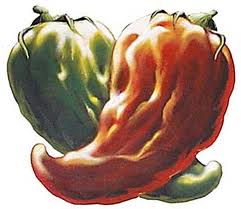Welcome by Cockeyed Clyde's
I cannot remember when I first started cooking. I know as a child, I was often in the kitchen with my grandma while she cooked. I would patiently sit on the counter and watch, waiting to get a taste of what's cooking. Occasionally she would allow me to help. Maybe this is where I found the love for cooking. My grandma stirred love into everything she cooked.
As a teen I began working in various restaurants, learning good things and a whole lot of bad from various cooks. I eventually ended up in Connecticut, where I became an apprentice under Executive Chef Charles E. Petit. This is where I began perfecting my skills. I joined the U.S Military in 1983 as a cook. The Army brought me to Kitzingen Germany, where I spent most of my 7 ½ year Military career. Over the years I have won various awards in Culinary Arts, Cooking and Grilling. I have held every position in the Restaurant field, from dishwasher to Head chef. I have spent countless hours creating and perfecting my own recipes.
During the 80's and 90's the internet as we know it today was nonexistent. Preparing my recipes was extremely difficult. I was often requested to BBQ, make Chili con Carne, or some other item for parties (Chili con Carne is what we Americans call "comfort food"). Often I had to rely on family members in the states to ship me the items I needed to prepare these recipes. With the age of the internet it allowed me to find better quality items. And at one time difficult to find items, are now just a mouse click away. I import my own chili's that I have personally selected. I use only Mexican Oregano, which should not be confused with the Greek Oregano. I do not add cayenne, paprika, or salt to my Chili con Carne seasonings. I spent countless hours, testing and blending various chili's to get the perfect combination of flavor and heat. And anyone who knows me will admit I'm extremely critical of my own cooking, almost to a fault. Care and pride are why Cockeyed Clyde's products bring forth that authentic flavor and quality that falls short in other brands. My first 2 products Cockeyed Clyde's "mild" and Cockeyed Clyde's "hot" are the result. And yes occasionally, I still get that one person who swears the "mild" is too hot. All I can say is "If Chili con carne does not warm the throat, then it's just Bolognese".
Who is Clyde? I'm an American, who landed here in Germany and decided to bring a "Taste of America" to his friends. And maybe just bring a little more knowledge that American eating does not just come out of a can.
Thanks for stopping by and checking out my site. And don't forget to check out some of the recipes I think you, your family and friends will enjoy. I know mine do.
Clyde
